
MADE WITH LOVE BY
Median number of words in a line
of dialogue by season




The median number of words in a character’s line of dialogue for each character is generally random, except for Jerry, whose line length stays at exactly eight words for every season except the first. A throwaway coincidence? Maybe. But Seinfeld himself also has a comedic rhythm of surgical precision. “My guess is, he would look at his own stuff and make sure it was in his voice precisely,” says Armstrong. “He was so dead on about knowing what his deal is. Coming from stand-up, he had an instinct for exactly what works.”
s9
s8
s7
s6
s5
s4
s3
s2
s1
10
10
9
8
8
8
9
11
11

10
10
10
10
10
10
9
9
8
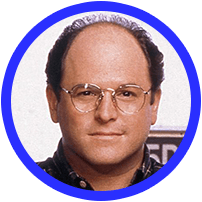
7
10
9
9
9
9
8
8
8

9
8
8
8
8
8
8
8
8

click for sound:
click on each character to see more:








ha ha ha ha
24
15
hu hu hu hu
9
nice to meet you
9
I thought you were
10
well i don't know
11
why don't you just
11
what are you gonna
what kind of a
15
13
to go to the
10
i can't believe this
11
wait a minute what
11
you don't have to
12
go to the bathroom
12
i don't even know
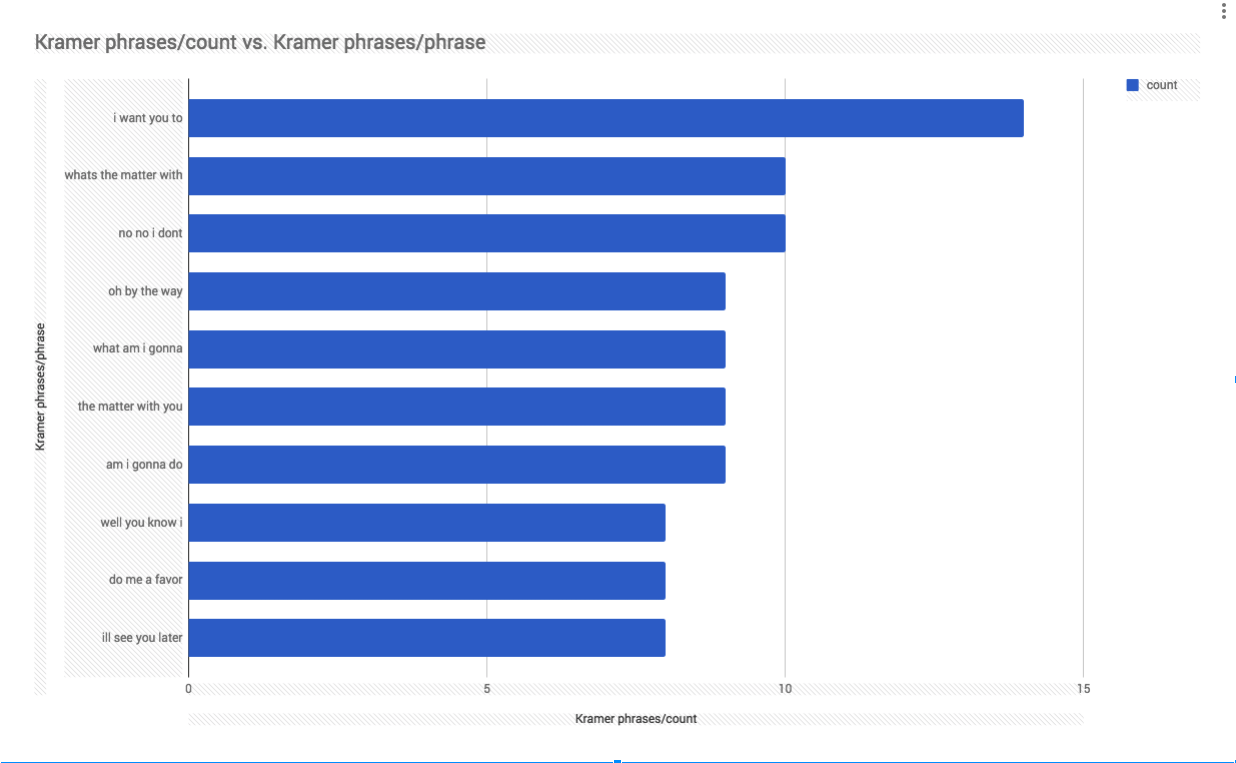
i want you to
21
16
what's the matter with
13
i'll see you later
13
do me a favor
13
well you know i
13
am i gonna do
14
the matter with you
14
what am i gonna
15
oh by the way
16
no no i don't
yeah come on up
21
16
what the hell is
13
what happened to you
13
what happened to you
13
you want to go
13
do you want to
14
what did you do
14
what do you need
15
know what i mean
16
i don't know if
Most Frequently Used Four-Word Phrases
Not Used Frequently By Other Characters
The phrases below include four-word phrases that are among each character’s most frequently used, but also not among the most frequent phrases for other characters. So, while all the characters say “go to the bathroom”, only George says it so often that it’s in his top 100 most used phrases.
I CAN'T
BELIEVE THIS
WAIT
A MINUTE
I HAVE TO GO TO THE BATHROOM
OH WHAT'S THE
MATTER WITH YOU?
OH COME
ON JERRY
DID YOU
SEE THAT?
WHAT IS WRONG WITH everybody?
HAHAHAH
HAHAHA
what the hell is this?
WHAT DID
YOU DO?
I CAN'T
BELIEVE THIS
WAIT
A MINUTE
I HAVE TO GO TO THE BATHROOM
OH WHAT'S THE
MATTER WITH YOU?
OH COME
ON JERRY
DID YOU
SEE THAT?
WHAT IS WRONG WITH everybody?
HAHAHAH
HAHAHA
what the hell is this?
WHAT DID
YOU DO?


“Wait a minute”: “Once they figured out how to make the show and what the show was, it got denser and denser over time.” The characters’ hijinks could grow so wackily convoluted that the writers had to include clarifying dialogue, prompted with, for instance, a “wait a minute”. Plotlines also revolved around characters’ hapless behaviors landing them in situations they only later understood—for example, when George inadvertently winks at his boss and raises the boss’s suspicions. “Wait a minute, wait a minute,” George realizes, “it’s from that grapefruit that Jerry squirted at me!”
The bathroom: “George is obsessed with the bathroom,” says Armstrong, “...with toilets, going to the bathroom—it comes up a lot.”
“Do you want to”: Seinfeld’s plotlines often involved what goes awry when the characters try to fill their free time. “So much of the show is about them making plans and then something goes wrong,” says Armstrong.
Memorable phrases by number of occurrence
2
26
18
16
15
12
26
8
6
5
5
4
4
they're real, and they're spectacular
low talker
high talker
it's not you, it's me
not that there's anything wrong with that
the old switcheroo
man hands
shrinkage
yada yada yada
soup nazi
the move
hello newman
Festivus

Seinfeld’s legacy stems in no small part from its unforgettable phrases—“yada, yada, yada”, “not that there’s anything wrong with that”, “no soup for you”—that still feel relevant 20 years later. But don’t call them catchphrases, says Armstrong. “I wish there was a different word for it,” she says. Catchphrases, like Erkel’s “Did I do that?” or JJ’s “Dy-no-mite!”, are more like comedic filler that less inspired writers can return to throughout a show’s run. Seinfeld’s enduring phrases, on the other hand, tended to appear throughout a single episode and then never again—our memory of them is not so much a function of their repetition as of their brilliance.

words by
Andrew thompson
design by
tri vo
Proportion of lines of dialogue spoken
per character, by season and episode

Show all
















S9
S8
S7
S6
S5
S4
S3
S2
S1
click on
each character
to see more:
What began as a sitcom about a New York comedian grew to equally involve all four characters and their entangled plotlines. As the show wore on, Jerry’s monologues became less frequent and were abandoned entirely in the eighth season. Over time, the writers created more plotlines for Kramer, who was originally conceived as a more minor side character. Through the show’s nine-season run, Elaine’s and George’s share of dialogue remains more or less constant, while Jerry and Kramer nearly meet in the middle.

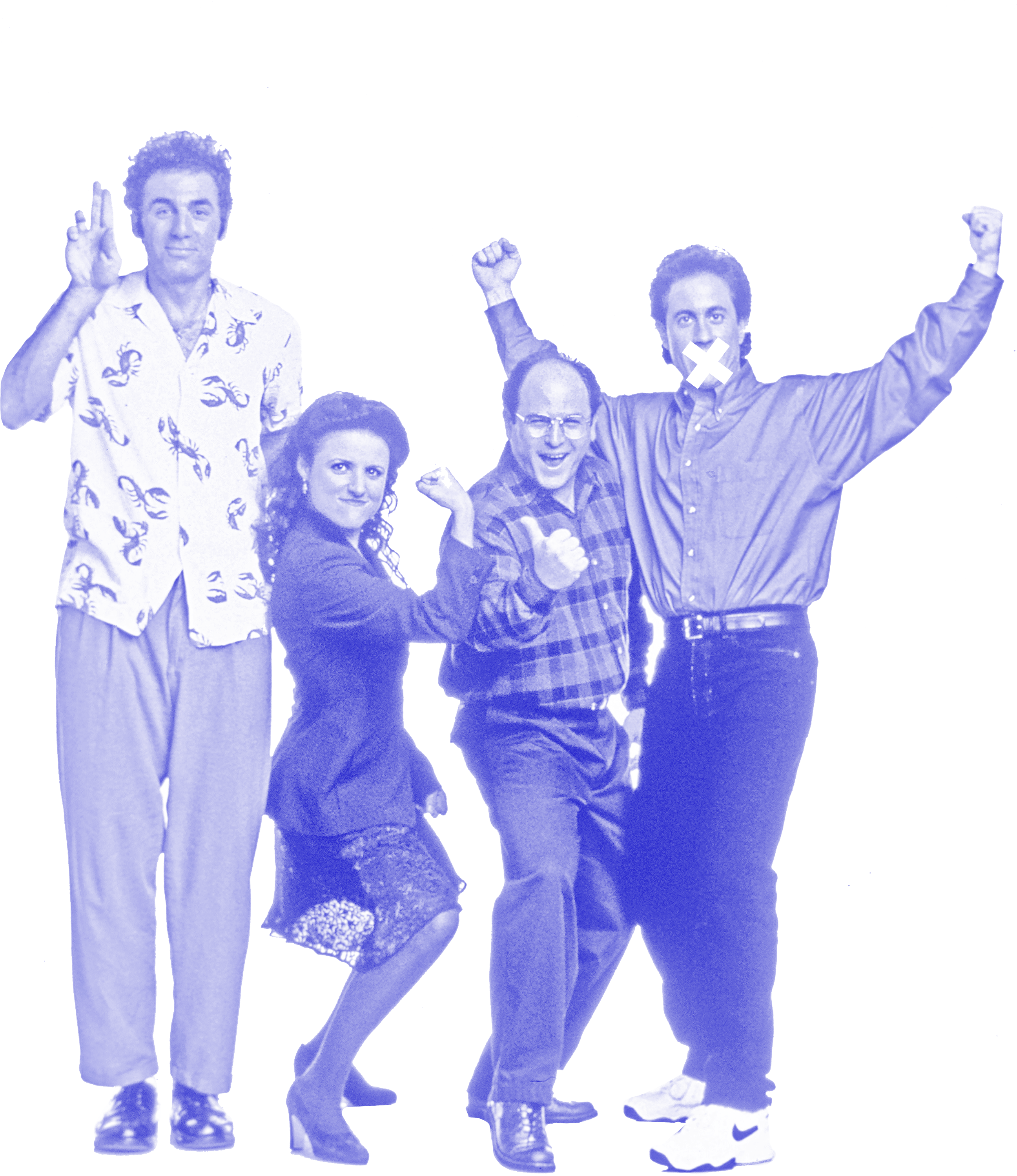
JERRY & GEORGE
JERRY & ELAINE
ELAINE & PUDDY
JERRY & MORTY
ELAINE & PETERMAN
JERRY & HELEN
JERRY & NEWMAN
KRAMER & NEWMAN
GEORGE & SUSAN
ELAINE & KRAMER
GEORGE & KRAMER
ELAINE & GEORGE
JERRY & KRAMER
Seinfeld’s dialogue mirrored that of its creators, Jerry Seinfeld and Larry David. “That’s Jerry and George,” says Armstrong. “And they said, 'You have to have a girl', so they added Elaine, and it makes sense that that’s the next thing you see” on the chart. What may surprise viewers is Newman’s spare screen time, despite the character’s outsized cultural imprint. “He makes a really big impact, but he’s not around a lot,” she says.

JERRY
ELAINE
GEORGE
KRAMER
PETERMAN
PUDDY
LEO
MORTY
NEWMAN
SUSAN
ESTELLE
HELEN
FRANK




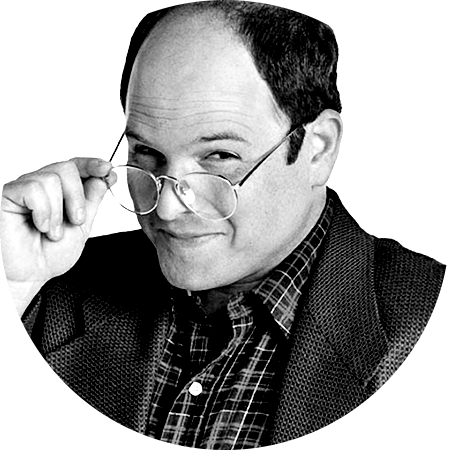



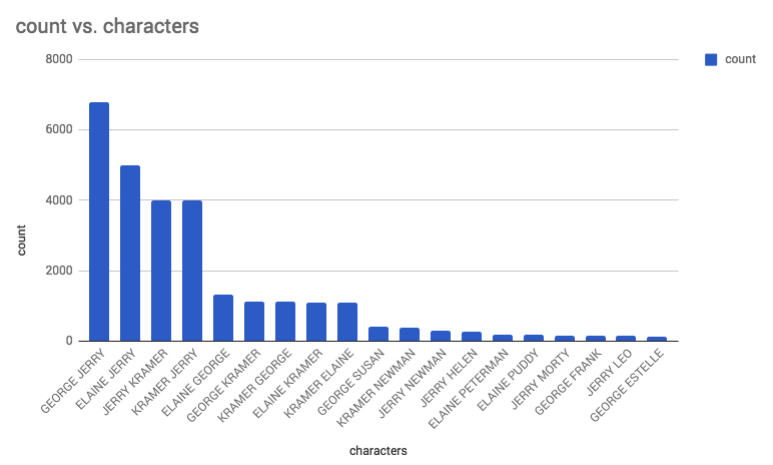
Frequency of two-character interactions between...

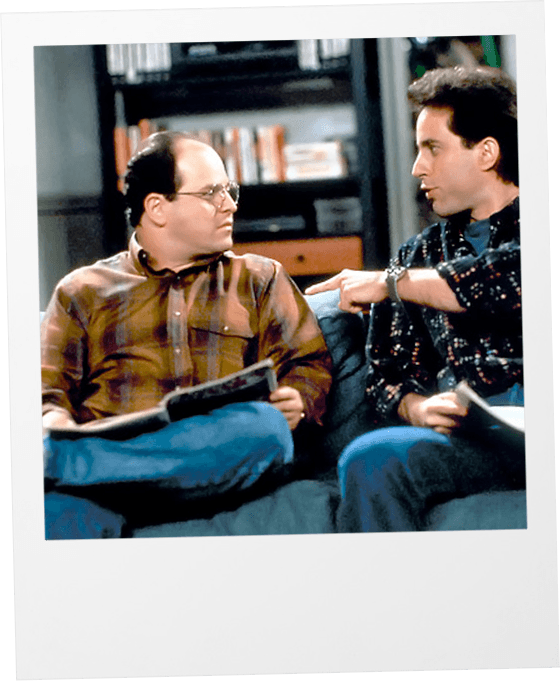

May 14th marks the 20th anniversary of the finale of Seinfeld. Two decades later, the newly luxurious Upper West Side is nearly devoid of the mom-and-pop businesses crucial to the show’s ecology, and smartphones have fixed the logistical challenges that drove so many plotlines. And yet Seinfeld, both in viewership and cultural memory, endures like few other shows have. Hulu, which has exclusive rights to the show, reports that the average age of their Seinfeld viewer is 27, meaning they were in 2nd grade when the finale aired.
“I’ve seen so many different people connect over their love of this show,” says Jennifer Armstrong, whose book Seinfeldia: How a Show About Nothing Changed Everything explores the show’s history and legacy. “Even though it feels so specifically about these white, upper-middle class New Yorkers of the 90’s, it has endured because it has this really relatable nothing. It’s about complete banality.”
In honor of the anniversary of the show's finale, we got our hands on the script for every one of the 173 episodes—from the underachieving pilot to the underwhelming finale—and we tried to make sense of them. The essence of Seinfeld will never be captured in data points, but what the data revealed was more curious than we’d have guessed.




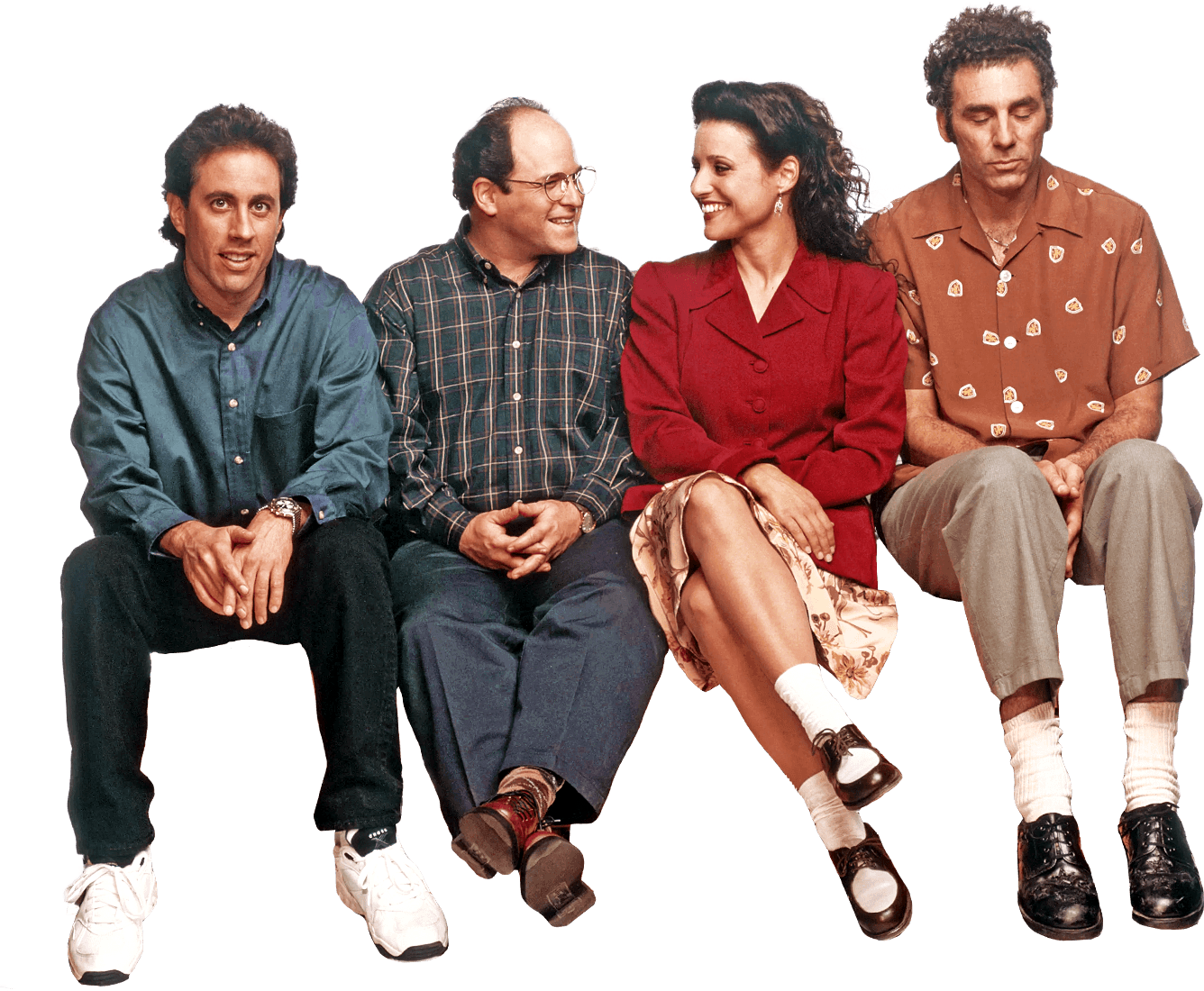



Hover Here
Link
Here is some text - CLICK TEXT HERE - URL is Ceros.com
Carry Over UTM
Pass UTM